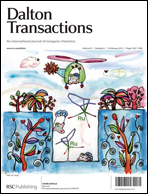1,3-Di-amidoquinoline conjugate of calix[4]arene (L) as a ratiometric and colorimetric sensor for Zn2+: Spectroscopy, microscopy and computational studies†
Abstract
Carboxamidoquinoline appended calix[4]arene-1,3-di-conjugate (L) has been synthesized and characterized and its single crystal
![Graphical abstract: 1,3-Di-amidoquinoline conjugate of calix[4]arene (L) as a ratiometric and colorimetric sensor for Zn2+: Spectroscopy, microscopy and computational studies](/en/Image/Get?imageInfo.ImageType=GA&imageInfo.ImageIdentifier.ManuscriptID=C2DT11900E&imageInfo.ImageIdentifier.Year=2012)

 Please wait while we load your content...
Please wait while we load your content...